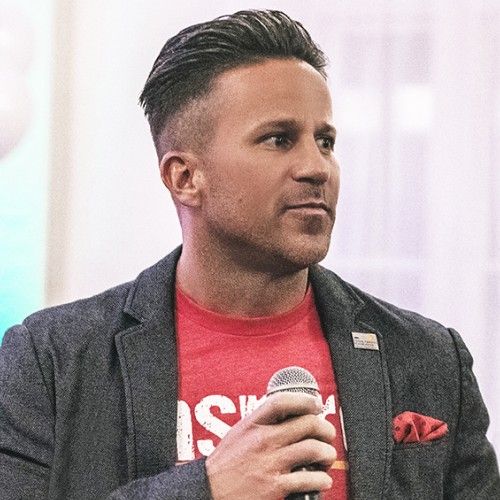A 360-degree assessment is a unique survey that uses input from self-assessment and from colleagues’ assessments to understand a professional’s strengths, weaknesses, and blind spots. By gathering feedback from your colleagues alongside your own perspective on those same questions, we can get a deeper look at how your self-perception compares to the way your colleagues see you.
With this data, we can break down the results of a 360-Degree Assessment into three outcomes:
1) Somebody has underestimated their abilities (self-rating lower than colleagues’ ratings),
2) Somebody has overestimated their abilities (self-rating higher than colleagues’),
or
3) Somebody is self-aware about their abilities (self-rating matches colleagues’).
or
3) Somebody is self-aware about their abilities (self-rating matches colleagues’).
This article is going to address some possible problems and solutions that might arise for people who are self-aware of their abilities. This article is part of a series I’m writing about Ambition In Motion’s 360-Degree Assessments and how their results should be interpreted. There are ten other articles addressing the two other possible outcomes of a 360-Degree Assessment available here:
Underestimating - People Management, Innovation, Leadership Ability, Communication Skills, and Financial Management
Overestimating - People Management, Innovation, Leadership Ability, Communication Skills, and Financial Management
Understanding Self-Awareness for 360-Degree Assessments
When somebody is self-aware about their abilities, this means that they gave themselves a similar score as the score their colleagues provided on the same skill.
Initially, self-awareness may seem to be a cut-and-dry positive outcome but looking a bit deeper reveals some potential issues. After all, the goal of a 360-degree assessment is to identify blind spots and close the gaps between one’s self-perception and the perception of their colleagues. However, we find that there are opportunities for growth within a self-aware 360-degree assessment report and this article will review those opportunities.
At Ambition In Motion, our 360-Degree Assessment has 5 core components:
a. People Management,
b. Innovation,
d. Communication Skills, and
While self-awareness is likely the best outcome relative to the other two possibilities, I’m next going to explain how you can leverage self-awareness to grow as a professional and identify blind spots in your professional perspective. I’m going to show why self-awareness on your 360-Degree Assessment is more than just a pat on the back, even if you and your colleagues share similar views on your performance.
People Management
People Management abilities are extremely valuable, regardless of whether or not you are in a leadership position or have the title of manager. People management stretches across one’s ability to maintain positive relationships with those they work with, participate in organizational citizenship activities (e.g., supporting a colleague with their work), be open to constructive feedback, and show that you are always open to learn more.
If you gave yourself a people management score that aligns with your colleagues, we can consider two types of outcomes depending on how well you rated your performance.
Self-Awareness but poor performance
If you gave yourself a relatively low score and your colleagues agree with you, the reason why this isn’t a good thing should be immediately apparent. You perhaps gave yourself a low score because you don’t believe that people management is one of your strengths. Of course, acknowledging your shortcomings is the first step to improvement, however, the fact that your colleagues agree with you is concerning because that means they feel it as well.
One option is to just shrug it off and think to yourself “I am not in a role that requires me to manage people so my performance in this area doesn’t really matter.”
If you feel this way, I want to challenge that thinking. Whether you are relatively low on your company’s org chart, are a solopreneur and don’t have any direct reports, or are in pretty much any scenario where you don’t think you are managing people, I can make an argument that there is some form of people management going on.
If you are relatively low on your company’s org chart, that does not mean that you can’t manage up. Managing up is the notion that we, as employees, control our work environment and outcomes just as much as our managers do, and we have the capabilities to communicate our goals, roles, and what we are comfortable with in a way that allows for us to be productive while protecting our boundaries.
If you are not able to manage up, you may end up entirely at the mercy of your manager or other stakeholders. For example, if you are a full-stack developer but prefer to work on front-end design work and your boss keeps assigning you to back-end data tasks, without managing up, you are going to be frustrated/bored with the work you do. Either your leadership will keep asking you to do things because they are assuming that you will tell them when enough is enough or you will get the same tasks over and over again and feel the strain of monotony. Either way, the inability to people manage will create stress on your life.
If you are a solopreneur without any direct reports, you still report to your clients. People management is the ultimate in setting expectations and delivering results. Your clients could end up “firing” you if you can’t properly set and communicate expectations, or you could burn yourself out by working yourself ragged meeting trying to meet and achieve an impossible goal that a client demands. By practicing people management, you could change those outcomes by creating a shared perspective on the tasks ahead or even helping your client avoid an impossible expectation without causing them offense.
If you are in any other scenario where you don’t feel like you should improve your people management abilities, challenge yourself with the following questions:
· Am I enjoying my work?
· If I continue doing my work like this with the same people for the next 5 years, will I still continue to enjoy my work and get compensated in a way that satisfies me?
· Will I feel like I am growing in my career in 5 years if things stay the same?
If you answered yes to all 3 questions, then there is nothing you need to change. But, we find that the vast majority of people say no to at least one of these questions and that necessitates interacting with others and managing those relationships.
Self-Awareness and high performance
If you gave yourself a relatively high score for your people management ability and your colleagues agree with you, that is a great thing.
But, that doesn’t mean that there isn’t room for growth!
Here is a story that I believe exemplifies this. I have a cousin named Xavier. Xavier loves to play basketball. When Xavier plays basketball with his friends that live in his neighborhood, he crushes them and they think he is a great player. But, when Xavier plays against kids at his high school, he gets beat. Unsurprisingly, Xavier loves the comfort of playing against kids in his neighborhood and doesn’t love getting beat (so Xavier doesn’t bring it up to them). Since the kids in his neighborhood never get to see him getting beat, they still believe Xavier is the best player they have ever played against.
The point: oftentimes at work we lose objectivity.
We don’t have a work version of “high school basketball” where we can compare our skills. All we have is our insulated work environment. So, all our colleagues know is our current work environment and their past work environments to compare it to. Without additional experience, they might not realize your potential for growth, even with a high rating.
The question you have to ask yourself is: “Am I really the Michael Jordan of people management? Or am I more like Xavier?”
More likely than not, you are more like Xavier.
This isn’t a bad thing. It is awesome that you have the respect and admiration of those you work with. But it doesn’t mean that there isn’t room for improvement. And honestly, even Michael Jordan would realize that his personal best is only his best so far if he keeps improving.
What you can do to improve
Ask - If you would like to know how you can be more helpful to your colleagues - Spend more time intentionally asking your colleagues how you can help support their work.
Introspect - If you would like to start being more helpful to your colleagues on your own - Take more time to consider what you could do to be more helpful for your colleagues. Be sure to check with them if that would be helpful to them.
Manage - If you would like to be more approachable for constructive feedback - Spend more time asking your colleagues for areas in which you can improve and communicating you want this feedback so you can improve yourself as a professional.
Overall, having a self-aware response on your 360-degree assessment report isn’t a free pass to give in to stagnation. It simply shows that you and your colleagues are on the same page. But, it doesn’t mean that there isn’t room for improvement. The implications from having a self-aware score are not wholly positive or wholly negative. Instead, it is a snapshot of your current performance which can help you make informed decisions about where you need improvement. As long as you possess an open-mindedness about making improvements and are willing to measure whether the new changes worked, you can ensure that you are on a positive track towards continual growth and improvement.




































































